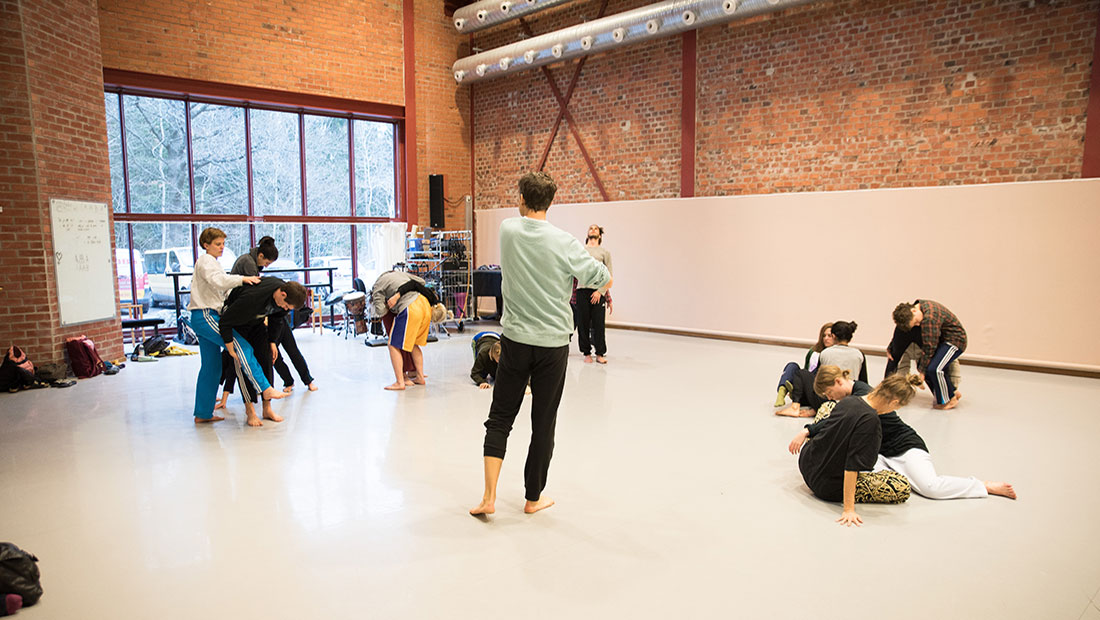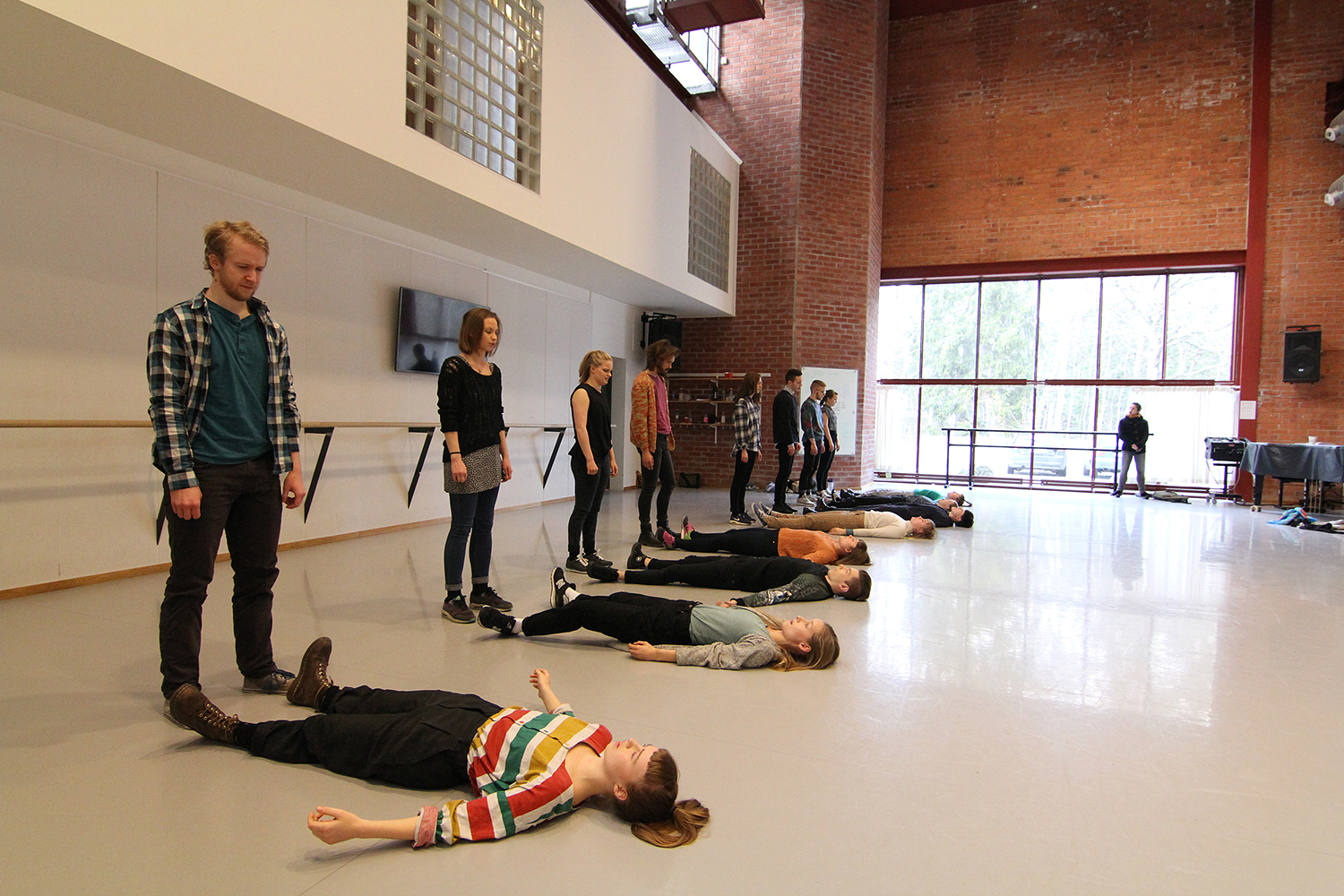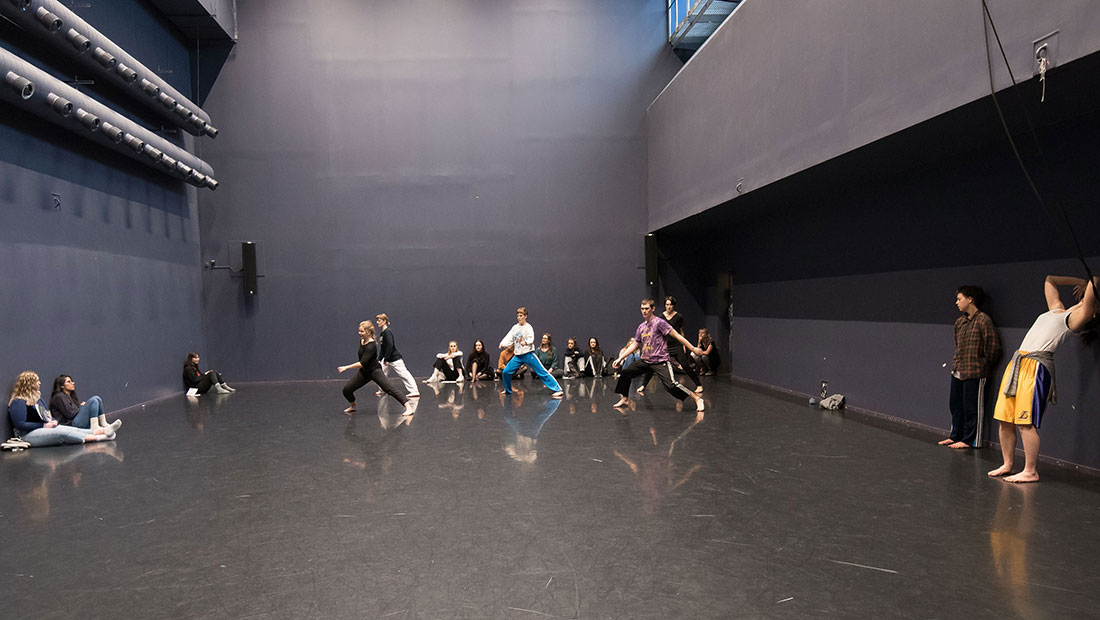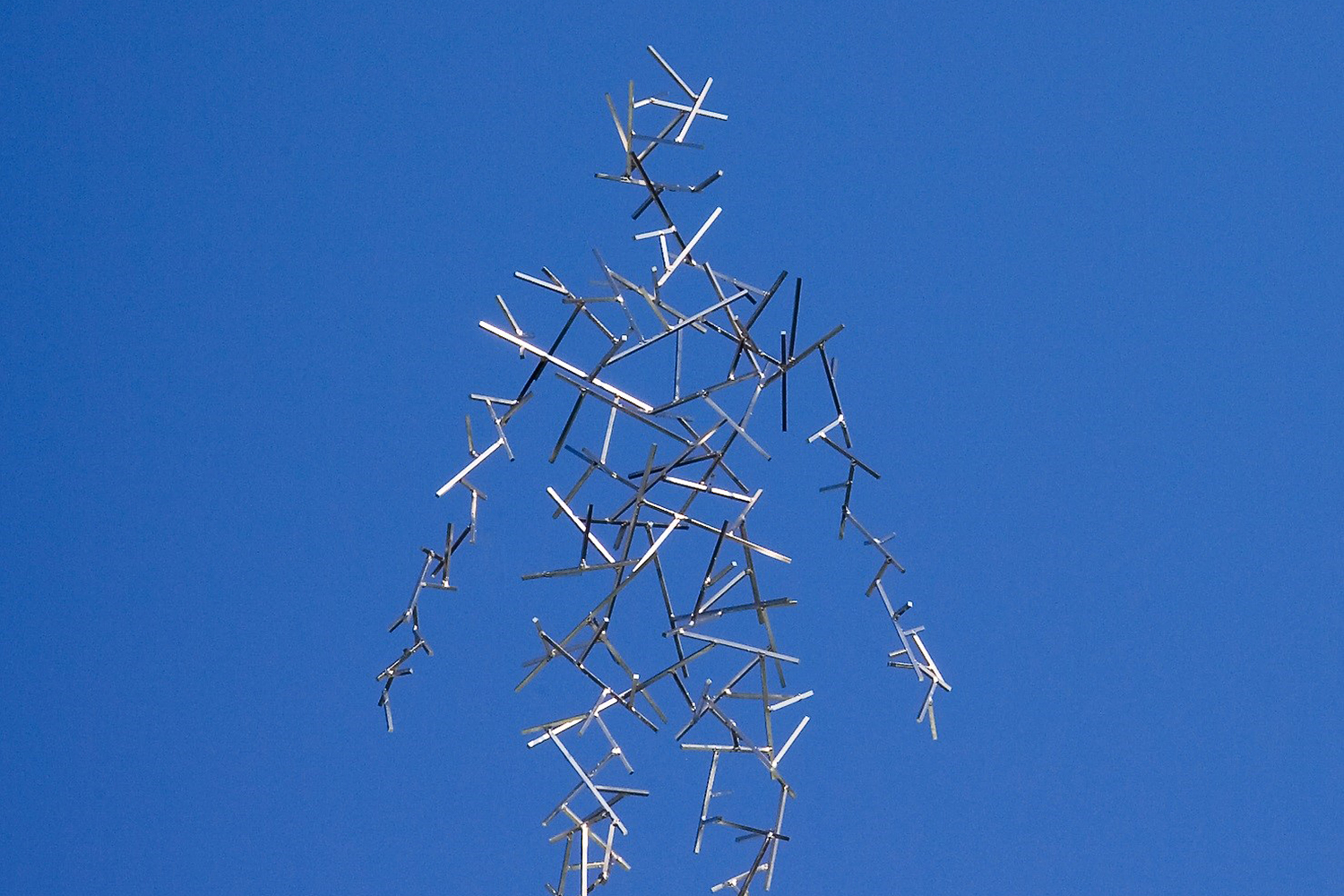Brinellvägen 58
The building at Brinellvägen 58 was built in 1966 for Mechanical Engineering at the Royal Institute of Technology. The building also housed Energy Technology, which has now moved to the neighbouring building at Brinellvägen 68. The architect was Gunnar Henriksson, who also designed the School of Architecture. The former School of Dance moved into the building in 2006 and the premises cover about 8000 m².
The building at Brinellvägen 58 has a total of 14 dance studios including four large ones (all of which are about 200 m² and have a ceiling height of 9 metres), four medium-sized ones (about 100-120 m²) and six smaller ones (60-80 m²). All dance studios and the stage have underfloor heating. The stage (about 350 m²) is flexible with movable bleachers that allow the stage space to change as needed.
Accessibility
Car park: Parking spaces for vehicles with disability permits are located next to the main entrance.
Entrance: The main entrance at Brinellvägen 58 is at ground level and is equipped with an automatic door opener.
Lift: The lift is equipped with a push button for automatic door opening. All floors can be accessed by wheelchair.
Toilets: Toilets adapted for the disabled are available on all levels except the basement level.
Temporary evacuation points in case of fire
In case of fire, there are "temporary evacuation points" where wheelchair users can wait for help with evacuation. The evacuation points are located on all floors in connection with the stairwell at Brinellvägen 34. Follow the evacuation signs with the wheelchair symbol.
Rental of premises
SKH receives many requests to rent out the university's premises, both from former students and from other people and organisations. The university strives to respond to these requests in a positive way without compromising the needs or safety of the organisation. The following guidelines govern the rental of premises:
The studios at Brinellvägen 34 and 58 should primarily be used for the university's teaching and research. Premises can also be rented by employees, students or third parties provided that the activities are not disturbed.
Rental of premises on Brinellvägen is handled by Fredrik Heimdahl, facilities and services manager.
Tel +46 8 494 00 306
fredrik.heimdahl@uniarts.se
Art at Brinellvägen 58
Antony Gormley: Domain (Maria)
London-based artist Antony Gormley describes his artwork as an 'antenna in human form', whose positioning transforms the somewhat square nature of the building into a place for imaginative experimentation and creation.
In the spring of 2006, the then School of Dance, following the artist's instructions, organised a party. Students and teachers who wanted to be a model for the artwork were invited to write their name on a note and put the note in a hat. Maria Ulriksson, then a second-year student in the Dance Pedagogy programme, won the draw. In May, she travelled to Gormley's studio in north-east London where her body was wrapped in cling film and covered from head to toe with a layer of plaster. Once the plaster solidified, she was carefully cut out of her negative mould and used to build the sculpture.
In contrast to Gormley's solid and dense casts of himself, this sculpture lacks a well-defined surface. Instead, it is made up of thin steel rods that are joined together to create a skinless, sprawling structure in human form. Like an image of a person's soul or energy field, separated from their body. The metal rods sensitively reflect the environment, vibrating irregularly at the slightest gust of wind.
The artist has referred to the artwork as "a constant presence" that measures the changes in the environment, through changing seasons and at different times of the day.
Art on Brinellvägen deposited by the Public Art Agency
Lars Arrhenius (1966-2020)
The Street, 2004
Animation 6:24 minutes
The Street portrays life along a street for 24 hours. The residents here have lost all individual characteristics and are instead represented by the symbols of humans that are used everywhere in urban environments (to tell us what we should, may and may not do). Normative obedience characterises these people who give birth in hospitals, eat at the table, work out at the gym, poop in the toilet, flirt at the disco and make babies in bed. There is also an average number of marginalised people moving along The Street. A homeless man begs for money every day and a sex worker waits for johns on a street corner. Together, the people along the street form a frightening yet comical microcosm, a social machine governed by convention.
(Public Art Agency SK0410-078)
Ylva Ogland (b 1974)
Rapture, 2002
Screen print, oil on canvas
Jenny Källman (b 1973)
Photographs:
- I fönstret
- Lido
- Vit tiger
- Flicka med pinne
- Sommarbarn
- Mammas balkong, 2005-2006
- Anette
- Leopard
Mattias Olofsson (b 1973)
En serie porträtt, 2003
Pencil drawing on paper
Hans Wigert (1932-2015)
3 prints:
- Bland gök och tallört SK9003-059
- Vassbåten SK9003-060
- På ängen SK9003-061



